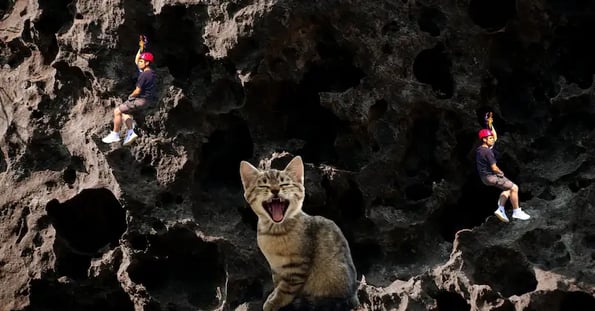If you thought 2023 was a strange one, good instincts — it really was. But 2024 is probably also going to be weird, with an increasing emphasis on AI and, hopefully, sustainability.

- San Francisco-based startup Zipline’s Platform 2 drones are ready to drop packages of up to 8 pounds in select US cities in 2024, thanks to an FAA exemption from a long-standing rule requiring that human drone operators have a line of sight on their drones.
If you see one, you’ll notice it hovers ~300 feet above ground before lowering its payload via tether, a process that Zipline claims is 10x faster than car or truck delivery.
Sweetgreen is already a customer and we’re excited about sky salads, but not as excited as we’d be if they were delivering them via actual zip lines.
- AstroForge is a California startup that wants to mine asteroids for platinum, which sounds like something the Tyrell Corp. would send replicants to do in Blade Runner.
Thus far, AstroForge hasn’t had much success, experiencing significant setbacks during its demo mission. Still, its second mission will launch in 2024 and, if all goes as planned, photograph an asteroid’s surface. It may be worth it for AstroForge to keep plugging away — platinum is worth ~$15k/pound on Earth.
- What does my cat want? Several organizations are now using machine learning to decode animal communication, from crows to whales
- One study found that female Zebra Finches prefer mates that sing like the birds they grew up near.
- The Project Cetacean Translation Initiative (CETI) is using AI to identify whale vocalizations, and will soon use an underwater microphone to record more in Dominica.
- The Earth Species Project is developing AI models in the hopes of having conversations with animals by mimicking their vocalizations.
We’re probably a long way off from knowing why my cat is meowing alone in the living room at 3am, but it’s still pretty cool.
- UK-based Helixx is 3D-printing vehicles, starting with a run of 100 electric, single-seat vans in 2024, followed by a truck, a taxi, and a rickshaw.
The small van uses swappable batteries and has a central driving position, meaning it’ll work in left-hand and right-hand driving countries. Its body is made of five 3D-printed parts that click together, which Helix claims reduces the manufacturing process by up to 50%.
In theory, it’s a cheaper, more sustainable delivery solution that could work just about anywhere.
- Portable Diagnostic Systems will be the newest narc in town when it launches its drug testing device next year.
It allows cops to quickly test drivers they suspect may be impaired for a number of substances taken over the past 24-72 hours using a saliva sample. This is a narrower window than a urine test, which can surface drugs taken over the past month.
PDS is hoping to launch with the ability to test for 30 drugs, including illegal substances and those prescription medications that warn you about not operating heavy machinery such as, you know, a car.
- We’ve heard a lot about fake news over the last few years, but what about fake newscasters? Channel 1 expects to launch its global AI news network, replete with AI-generated anchors, in 2024.
“It’s even possible to create footage of events where cameras were not able to capture the action,” one of them says, comparing it to a courtroom sketch.
Channel 1 says its stories will come from actual news networks, freelancers, and public data. But if you’re worried AI news will make it easier for misinformation to spread, well… you’re not alone. Real human journalists think that, too.
As for us, we can’t stop thinking about Max Headroom.
